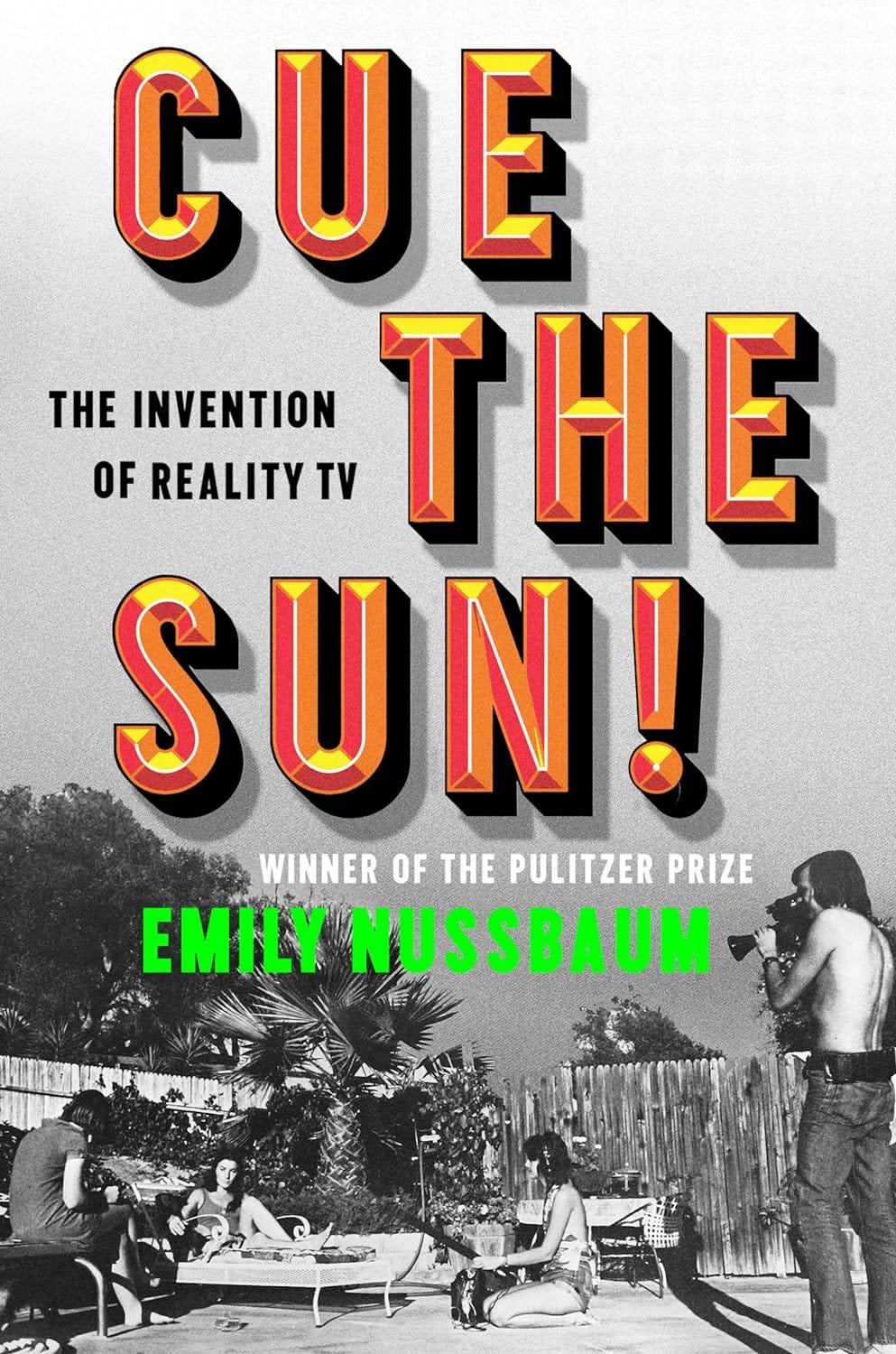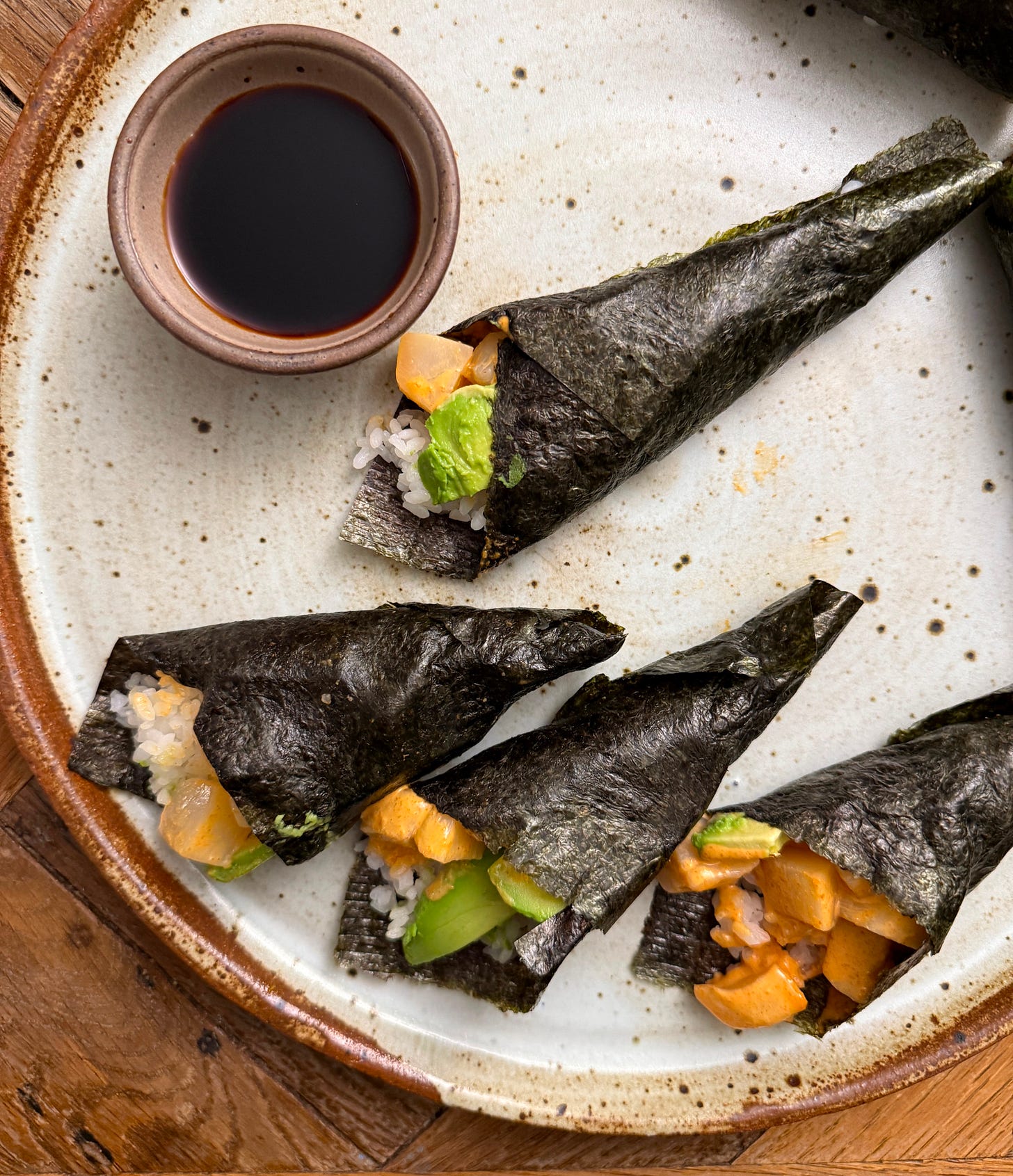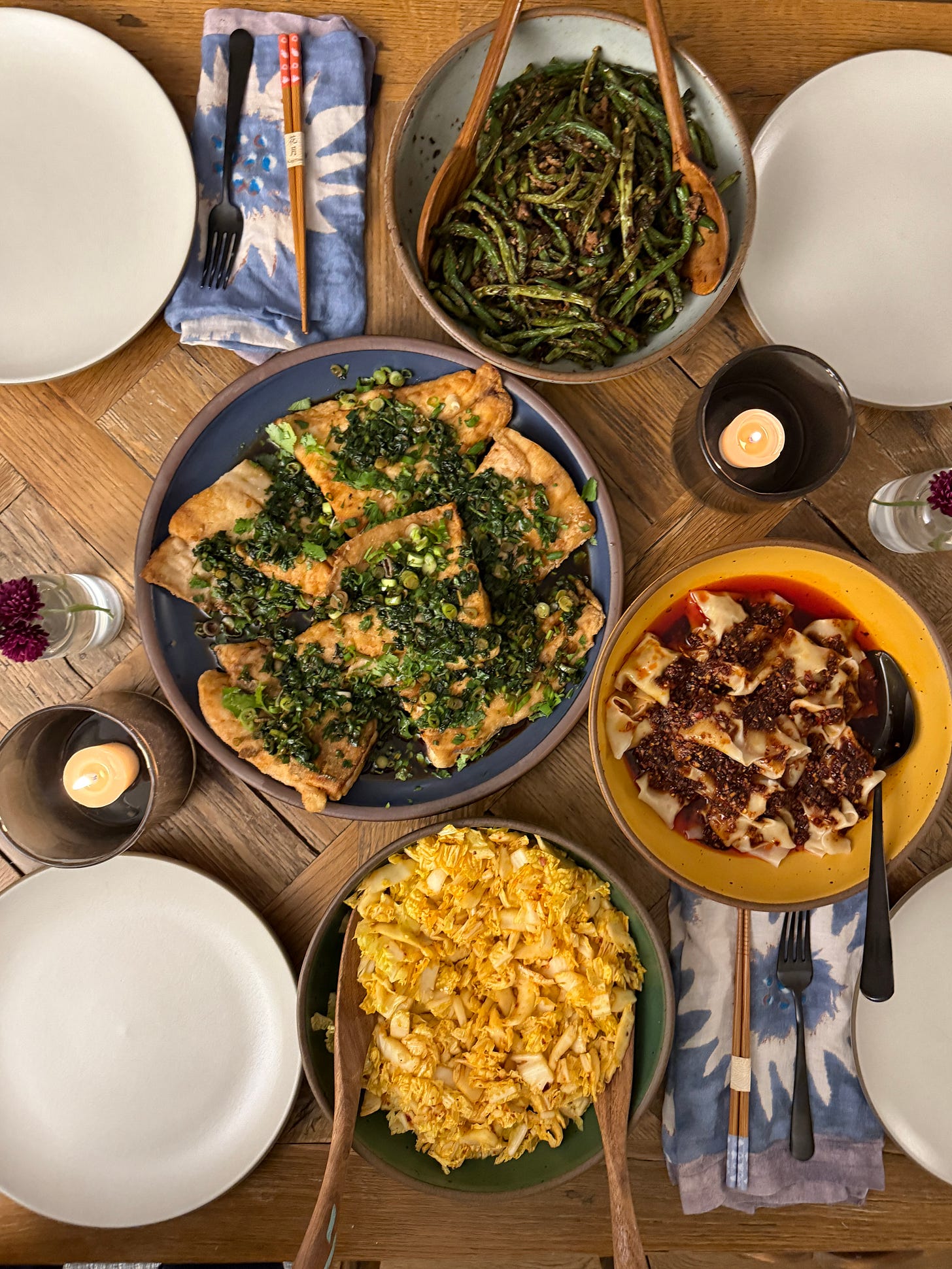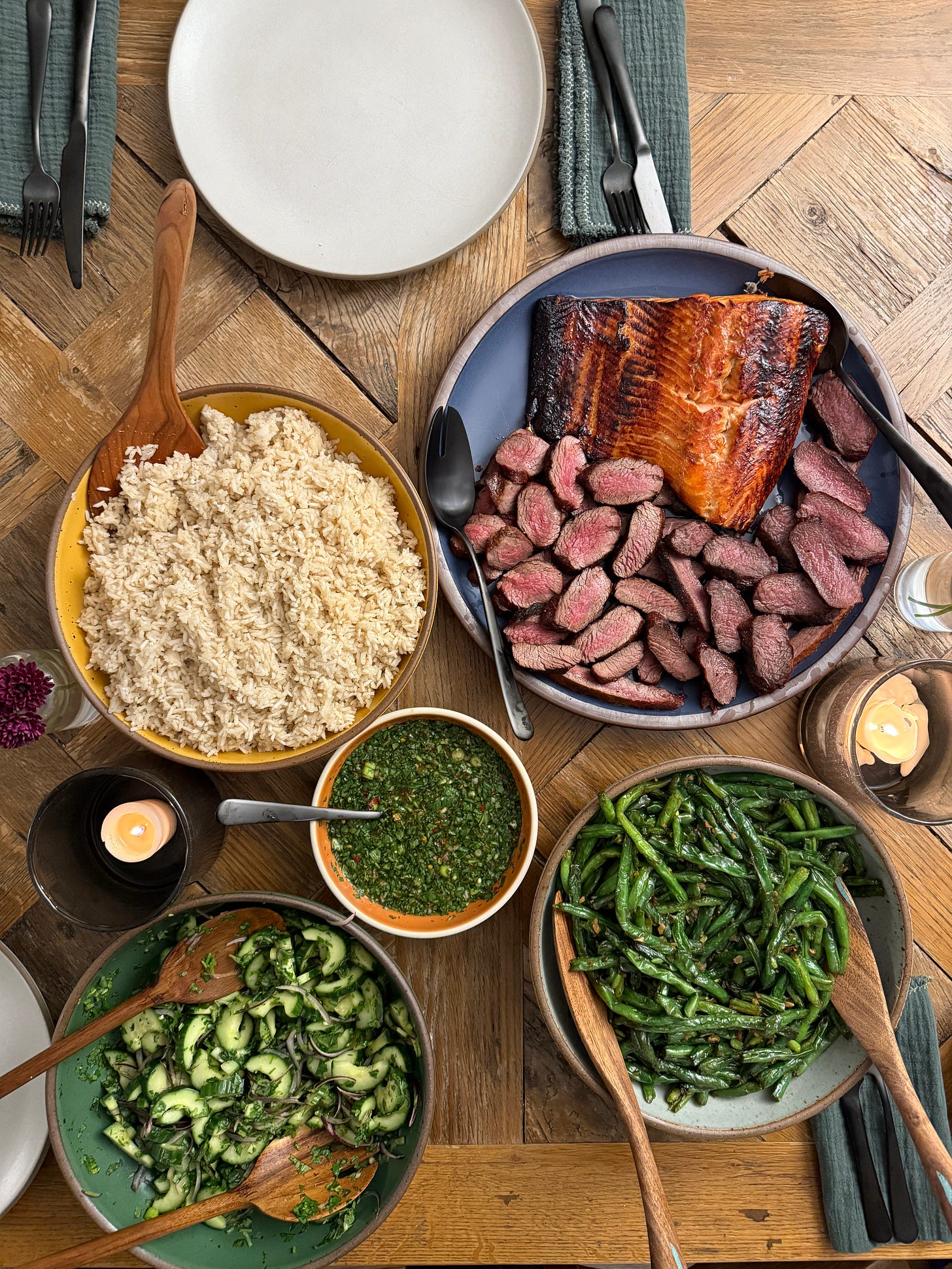Good evening!
I cooked a lot this past week and read my final two books of 2024 — Emily Nussbaum’s Cue the Sun!, about the history of reality television, and Han Kang’s The White Book, a collection of mini-essays and meditations on the color white. Let’s get into it.
What I read:
Cue the Sun!: The Invention of Reality TV by Emily Nussbaum
In Cue the Sun!, New Yorker staff writer Emily Nussbaum traces the history of reality television from the 1940s to the present (ending with Trump). The title is a reference from the 1998 film, The Truman Show, which centers on Truman, played by Jim Carrey, who does not realize that his life is part of a massive studio set filled with hidden cameras. The executive producer, played by Ed Harris, shouts, “Cue the sun!” at the beginning of each day to turn up the lights.
While reality television has been routinely dismissed as a fad, Nussbaum shows how the genre has grown since the radio shows of the 1940s (like the hidden camera show Candid Camera). Nussbaum places people at the center of Cue the Sun! — she interviewed more than 300 people (such as contestants, producers, and editors).
Cue the Sun! is well-written and researched, but I found this book quite boring. While Nussbaum provides some commentary on the impact of reality television on society and culture, it is ultimately an in-depth cultural history of the various programs and people involved in making them. I struggled to get into most of these stories — I would prefer to read a long-form article about the history of reality TV instead of a 400+ page book on the topic.
Rating: 3.6/5
Genre: Nonfiction (Cultural History)
Page count: 464 pages
Audio: 15 hours 11 minutes
Movie/TV pairings: Any reality show
The White Book by Han Kang
The White Book follows a nameless narrator on a writing retreat who focuses on the color white while processing a family tragedy. It is divided into three parts and reads like a series of mini-essays and meditations on grief.
The first part (“I”) is narrated in first person by the writer-narrator during a writing residency in Warsaw (Kang wrote The White Book while on a writing retreat in Warsaw). The narrator writes the story of her baby sister, who died just two hours after her birth, from the perspective of their mother. The narrator walks around Warsaw and notes that the buildings were reconstructed after World War II. She walks into a new building that includes a pre-WWII pillar. The narrator is like the new building, and her sister’s presence is like the pillar. The narrator then reimagines her own life as if her older sister had lived it.
The second part (“She”) is written in second person. This section is a collection of vignettes on white objects and nature, like pebbles, sugar cubes, snow, sand, and clouds.
The third part (“All Whitness”) is narrated in the first person. The narrator imagines what her life had been like with an older sister and younger brother.
The White Book is an interesting approach to processing grief. Overall, I thought this book was beautifully written. The narrator never knew her sister. Her life was a blank canvas, and the narrator uses art to recover “life. Which would have been beauty.” However, I thought that The White Book dragged on at times (even though it’s only 160 pages), particularly in the novel’s second part. I did not love it, but I would recommend this book to someone who enjoys poetry (the fragmented narrative reads more like poetry than a novel).
Rating: 3.5/5
Genre: Literary Fiction
Notable prizes/book clubs/lists: Han Kang won the Nobel Prize this year.
Page count: 160 pages
Audio: 1 hour and 19 minutes
Articles and shows I cannot stop thinking about:
The Top Twenty-Five New Yorker Stories of 2024
I’m reading a lot of roundups and “best of 2024” lists — this collection of New Yorker articles is excellent.
The Day of the Jackal
I’m watching The Day of the Jackal, a show about a sniper assassin in Europe and the British intelligence officer who tries to track him down.
What I cooked:
Spicy scallop hand rolls: This recipe yields way too much sauce, but it’s delicious.
Steak with chimichurri
Kenji López-Alt’s crispy roast potatoes
We made homemade Chinese food (from the The Woks of Life cookbook) on Christmas Day:
Napa cabbage salad
Lightly fried striped bass with soy, cilantro, and scallion sauce
Steak with crying tiger sauce
Garlic green beans from the Night + Market cookbook













